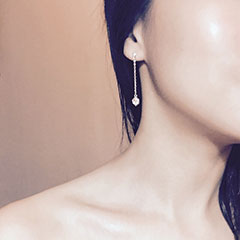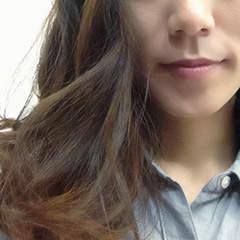27/05/2015
沒有溝通的世代
阿爾伯特·愛因斯坦:「我們的科技超越我們的人性已顯而易見。」
星期天,我與親友飲茶共聚。坐在左手面大枱的是較年長的一輩,他們樂於與對方溝通,談笑甚歡,享受美好的時光;右手面有兩張較小的桌子,一張是4人家庭,一對父母跟兩個未滿12歲的子女,他們均忙於把玩自己手中的電話。另一枱有6人,年齡介乎20至50歲,他們一樣是在傳短訊、上網,忙於跟電話溝通的他們實在無暇與同桌的人對話。場面可悲,但愈來愈普遍了。
前人過往會透過街頭公告員來發布重要的訊息。「現代化」的通訊意味著有另一種較叫喊更好的形式出現。美洲印第安人的狼煙及戈梅拉的哨子通訊都是有限制的,只限於簡單、已預先讓對方知道的用字,如「危險!」或「勝利!」。較長的訊息就需要以文字傳訊,如是者就有飛鴿傳書的出現。
印刷的發明把「新聞」的流通推至更廣。接下來的難題就是要提升傳送的速度。政府需要快速的傳訊,在戰亂時期猶為重要。對於那一班對希來多德有所了解的統治者,波斯信差的表現就是充滿挑戰性的基準。望遠鏡的發明帶來以視覺傳遞訊息的系統,常備的馬匹就是人類的首位信差。
於1853年至1856年期間發生的克里米亞戰爭很可能是首場「現代的戰爭」,當時的民眾即使身在家中亦能迅速得知戰事前方的情況。於倫敦“Times”任職的 William Russell是首位親臨戰場採訪的記者。他在文字中加插相片,發出熱切的求助訊息,為此,南丁格爾帶同38位護士到克里米亞來回應他的請求。此時,電報、電傳、摩斯密碼已通用。1876年出現電話,1895年出現收音機,通訊已穩步前行。電視於1920年出現,ARPANET於1969年,緊接的是1990年出現的互聯網……
恰如約瑟夫·普利斯特(1733-1804)所料:「隨著我們開創的溝通方式愈來愈多,我們的溝通愈來愈少。」的確,我們大幅擴展了溝通的彊界,不過,溝通為我們帶來的改變或許更大。在街頭公告員傳播的時代,我們學會對身邊的事物保持警惕,細心聆聽;在以狼煙互傳訊息的時期,我們學會了預測事情的發展,熱衷於揣測訊息底下的意思;在以書信往來的日子,我們學會了閱讀及寫作,是真正的「寫作」……自古以來,不論是好消息或壞消息,信差的出現總是受到歡迎的。時至今日,我們看低郵差的工作,抱著無奈的心情打開信箱,因為我們早已知道信箱內有一半是廣告單張,另一半是賬單。
一掌之間,我們擁有眾多快捷的溝通渠道與資訊,得來全不費功夫,捨棄亦絕不可惜,在感官資訊泛濫下,我們變得自滿。我們樂於獲取「即食的」知識,滿足於時下的問題,當中只有少數是被正式消化的。除非是充滿趣味及輕鬆的話題,少數人或會深入分析。信件被短篇幅的電郵取代,又或是更簡短的WhatsApp或表情符號。大量的相片、圖像、短片……好壞真偽,有些訊息正面,有想污染思想。沒有過濾,流言滿天飛,誠信如垃圾,傳聞?事實?誰管?
通訊科技所帶來的社會影響會日益巨大,這視乎每個人把這些影響導向好的一面還是壞的一方。有了超高清電視影像診斷、手術的技術,並可以自己開藥,這些將為醫學界帶來龐大的貢獻,如作為全球免費線上教育革命的MOOC (Massive Open Online Courses、磨課師),將站在教育界的前端。除此之外,在如泥沼般的資訊世界,人若持續在內打滾嬉遊,被泥漿滲透纏身,將令人上癮並與世隔絕。缺少了真實的社交或會扭曲真正的價值與自我認同。心理學家表示愈來愈多年輕人因為自己的網上帖文得不到讚許,又或是被網絡的朋友「絕交」而陷入抑鬱的困境。
由狼煙通訊以至飛鴿傳書,我們花了很長的時間才走到今天,請大家共同努力讓我們的通訊科技用得聰明,用得其所。或者由我們今天放下電話,與人溝通開始,讓我們證明愛因斯坦的想法是錯的。
(按:中文內容乃翻譯及撮寫版本)
Communication Problems
“It has become appallingly obvious that our technology has exceeded our humanity.”Albert Einstein.
On Sunday, I went “yum cha” with my family. On our left was a large table of elderly people, engaging in animated conversations, talking, laughing, having a good time. On our right were two smaller tables, a family of four, parents with 2 children under twelve. They were all busy playing with their cell phones, to each his own. At another table were six people, ranging from 20’s to 50’s. They too were messaging, web surfing, too busy with their phones to talk to each other. A pathetic scenario, albeit increasingly common.
Our forefathers used to broadcast important messages to the community through town criers. “Modernization” of communication then meant an alternative better than shouting. The American Indians’ smoke signals and the whistled language of Gomera are limiting, confined only to simple, pre-arranged words such as “Danger!” or “Victory!”. For longer messages, writing remains indispensable. Hence the pigeon post.
The invention of printing made “news” circulation to a wider audience possible. The next hurdle was to augment delivery speed. Governments needed fast communications, especially during war times. For rulers who knew their Herodotus, there was always the performance of the Persian “messengers” as a challenging yardstick. With the invention of the telescopes came optical signaling systems, together with relays of horses in permanent readiness was mankind’s first “courier”.
The Crimean War 1853-1856 was probably the first “modern war” in that the public at home became rapidly aware of what was going on at the front. The Times in London was the first to send a reporter, William Russell, out to join the army. He made a passionate plea for help, with photos. Florence Nightingale responded by sailing for the Crimea with 38 nurses. At this time, telegram, telefax, Morse telegraph were already available. With the telephone(1876) and the radio (1895)… we were well on our way. Television came in 1920, the ARPANET in 1969, and finally, the internet in 1990…
As Joseph Priestley (1733-1804) aptly predicted , “ The more elaborate our means of communication, the less we communicate”. We have indeed changed the landscape of communications immeasurably, but perhaps communications have changed us even more. With the towncrier, we learned to be vigilant and listened with intent. With the smoke signals, we learned to anticipate and to decipher with fervor. With the written mail, we learned to read and write, really “write”…Since time immemorial, be it good tidings or bad, the postman was always a welcoming sight. Today, we regard the mail man with disdain and open the letter box with exasperation, knowing full well that half are advertisements, and the rest are bills.
With all sorts of communications and information immediately available at our finger tips, acquired without effort, abandoned without regret, we have become complacent – whiplash of a sensory overload. We enjoy the “instantaneous knowledge”, satisfying questions of the moment, seldom is much registered. Few would bother with in depth analysis of any topic, unless they are fun and frivolous. Letters have been replaced by short emails, or shorter still in the form of WhatsApp’s or emojis. Photos, images, videos galore.. the good, the wicked, the true, the false... Some positive, some pollute minds… There is no filter, gossips spread, reputations trashed.. Hearsays? Facts?… Who cares ?
The social impacts of communication technologies will continue to remain stupendous, it is up to each individual to navigate such impacts to his own advantage or detriment. Tele-consultations, tele-surgery, tele-medicine will contribute immensely on the medical portal just as MOOC (Massive Open Online Courses) - a revolution in FREE online educa-tion worldwide – would on the educational front. Nevertheless, prolonged frolicking and excessive immersion in this information quagmire can lead to addiction and isolation. A lack of real social interaction may cause distortion of true values and deformation of self identity. Psychiatrists report increasing number of cases where young people fall into deep depressions after their postings failed to win any “likes”, or when fleeting online acquaintances “unfriend” them…
We have come a long way from the days of smoke signals and pigeon posts, please do let us make a collective effort in using communication technologies wisely. Perhaps by looking up from our phones, and start communicating with people around us today. Let us prove Mr. Einstein wrong.
《經濟通》所刊的署名及/或不署名文章,相關內容屬作者個人意見,並不代表《經濟通》立場,《經濟通》所扮演的角色是提供一個自由言論平台。
【與拍賣官看藝術】走進Sotheby's Maison睇睇蘇富比旗艦藝廊!蘇富比如何突破傳統成規?► 即睇
















